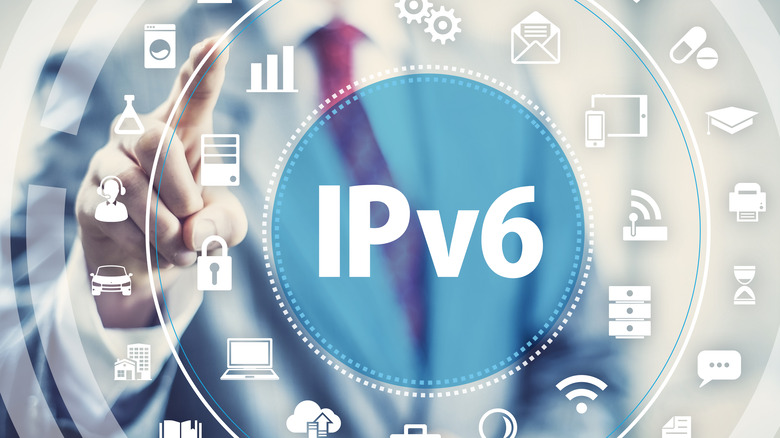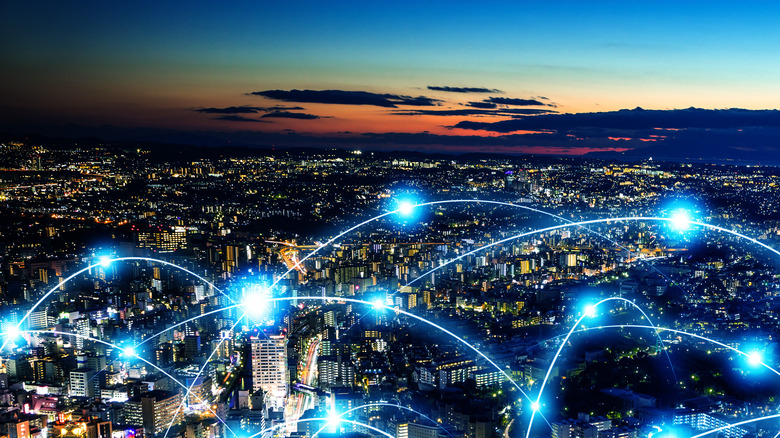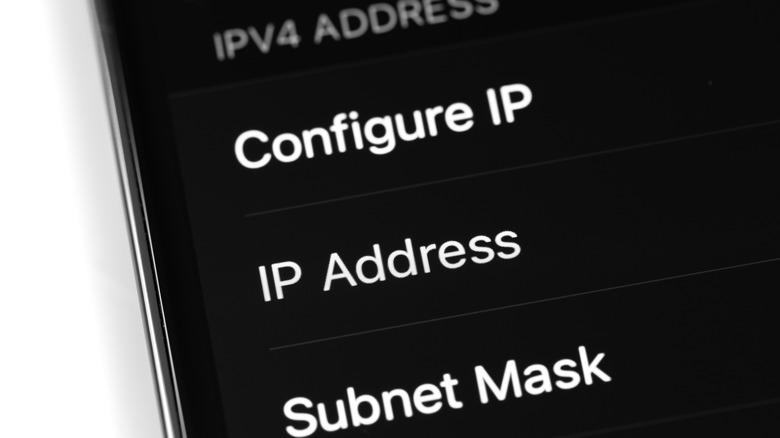IPv4 Vs IPv6: Which Is Faster?
Word around the net is that there's a new website technology that allows for a faster, safer web browsing experience, and it's called IPv6. As it turns out, this protocol isn't new at all, but instead has been slowly proliferating through the internet since 1998, waiting for its moment to shine. This IP tech conveys information over 128 bits, which is widely expanded over its 32-bit predecessor IPv4, but what does that actually mean for most Internet users? Once you break it down, this seemingly cryptic technology is actually far simpler and easier to understand than it initially appears.
First off, it's important for newcomers to note that the internet operates on a set of common protocols that allow computers to speak to one another. In order for one computer to send information to another, both computers must be identifiable on a network. These identifiers are called a computer's Internet Protocol (IP) address. This has been the common means that computers have used to speak to each other since the inception of IPv4 in the early 1990s, which succeeded the TCL protocol that was used in the '70s and '80s. Second, it's important to understand that IPv4 addresses are extremely limited — only 4,294,967,296 exist. When you put together all of the computers, smartphones, smartwatches, gaming consoles, and tablets operating on the Internet, that number is actually very small!
What is IPv4?
IPv4 stands for Internet Protocol version 4; it was first introduced by the U.S. government in 1983 in its Advanced Research Projects Agency Network (ARPANET). The protocol succeeds TCL and is based on 32 bits of binary code that can be expressed in hexadecimal numeral code, otherwise known as hex code. Each section of hex code indicates the address of each network connected to an ISP and each individual device connected to that network.
This works insofar as a single IPv4 address is split into its network address and host address. These are sometimes referred to as a network's "street name" and "home address," respectively, and are separated by something called a "subnet mask" that indicates which numerical value belongs to which half of the overall IP address. At least, that's how popular tech education YouTuber CBT Nuggets simplifies it. Regardless, this is all a very simple explanation for how IPv4 works without diving deeper into concepts such as DHCP configuration, which is no longer important in IPv6.
What is IPv6?
IPv6 is the follow-up to IPv4, but the two are entirely different beasts. The biggest and most important difference between the two protocols is how IP addresses are written. The Internet Society provides a simple example of these differences, explaining, "The IPv6 address notation is eight groups of four hexadecimal digits with the groups separated by colons, for example 2001:db8:1f70:999:de8:7648:3a49:6e8, although there are methods to abbreviate this notation. For comparison, the IPv4 notation is four groups of decimal digits with the groups separated by dots, for example 198.51.100.1."
Switching from one to the other is like switching from Latin to English; IPv6 is similar in function to IPv4, it carries some of the same roots, but it's ultimately a much more diverse nomenclature. Take note that IPv4 and IPv6 do not speak to each other at all. Most modern systems have an IP address for both versions of the internet, but an IPv4 address cannot speak to an IPv6 address and vice versa. When one internet provider gives a single network device an IPv4 and a separate IPv6 address, this is called "dual stacking" or "dual IP stacking."
Which is faster?
Because there are 128 bits of binary code in one IPv6 address instead of the 32 bits in IPv4, there's potentially infinite digital space for networks and network devices to occupy in an IPv6-based Internet, as it's essentially impossible to exhaust all of the potential variants and permutations. To understand the benefits of IPv6 on a corporate scale, it's important to know that many networks — both residential and corporate — have hidden large numbers of computers and other Internet-connected devices behind an IPv4 address using something called Network Address Translation (NAT). Basically, NAT is a separate network that acts as a buffer layer between a network and an ISP, allowing several devices to connect over the same IPv4 network address, even when they're not physically in the same location.
Of course, whenever a separate networking layer is involved, it invariably slows data transfer down. Adoption of IPv6 by a network owner would mean NAT is no longer required, since all networked devices could then speak to all networked devices, speeding up their entire operation, in theory. In practice, that may not always be the case, however, at least for now. Infoblox breaks down the speed differences between the two protocols, noting that in some cases, IPv6 can be slower than IPv4. Avast sheds light on the potential reasons for that, noting that IPv6 sports larger packets that could slow things down occasionally. Beyond that, however, the company explains that IPv6 networks will eventually get faster as adoption grows and, as a result, more effort is put into optimizing the technology's performance. In the long term, IPv6 will outpace IPv4, though it may not always be the faster choice at this point in time.
Is IPv6 a new technology?
You've likely been visiting a mixture of IPv6 and IPv4-based websites for the past two decades. However, the distance of time between when a new Internet Protocol technology is invented and when it's widely adopted by established internet service providers is relatively long. The reason for this delay is that IP tech is a foundational part of the web's infrastructure, IPv4-trained engineers are far more comfortable working with existing infrastructure, and it's generally a big deal when there's any kind of shift in the existing infrastructure — especially when it's of this size and scope. Doing so within an ISP's existing network comes with costs that are difficult to calculate, and even though IPv6 has better built-in security features, a shift of this scale can potentially invite new problems into a service provider's operations, as well as its bottom line.
Furthermore, many network engineers who commonly work with IPv4 may only be familiar with it and, until about a decade ago, there may have been little monetary incentive for them to relearn the wheel. After all, it's taken 25 or so years for IPv6 to reach a point where making the switch is widely attractive to service providers on a large enough scale.
IPv4 and IPv6 are vastly different
IPv6 isn't just an upgrade to a new protocol; it takes a fundamentally different approach to how the Internet works, at a core level. On one hand, it's far more scalable, offering infinite opportunities to grow and expand a single network alongside the Internet and its users. But at the same time, it has taken a long time for the Internet Engineering Task Force (IETF) to develop and distribute IPv6. It does little to incentivize internet service providers to ditch NAT, or at least introduce dual stacking, which would still take a lot of time, labor, and cash investment to implement in a primarily IPv4-based network.
However, the internet is finally reaching a tipping point — modern systems and routers are able to connect to IPv6 networks, and an overwhelming proliferation of IPv6 is likely to happen very quickly. Not only did IPv6 help the internet skirt the great IP address apocalypse that would have taken place around 2019, but it's also a more robust and scalable architecture. Implemented safely, features like IPsec (IP security) could make network operations much simpler and faster in general. That said, there's still work to be done. On March 18, 2021, FedTech reported that only 41% of the U.S. government's IP-enabled domains were based on IPv6 and that the federal government has set a timeline to reach 80% IPv6-only domain coverage by 2025. This is why IPv6 is openly referred to as a new-gen or next-gen Internet Protocol technology.





